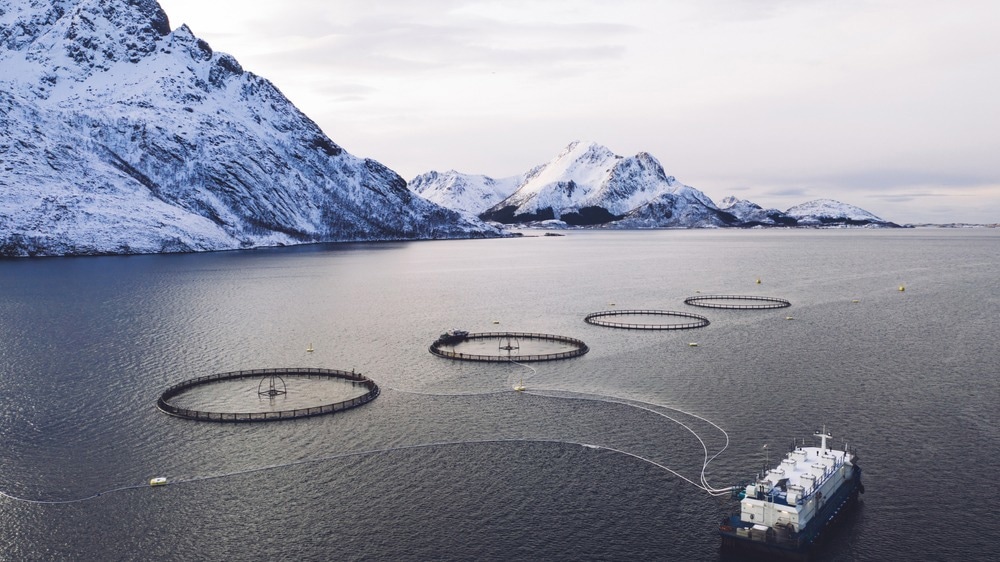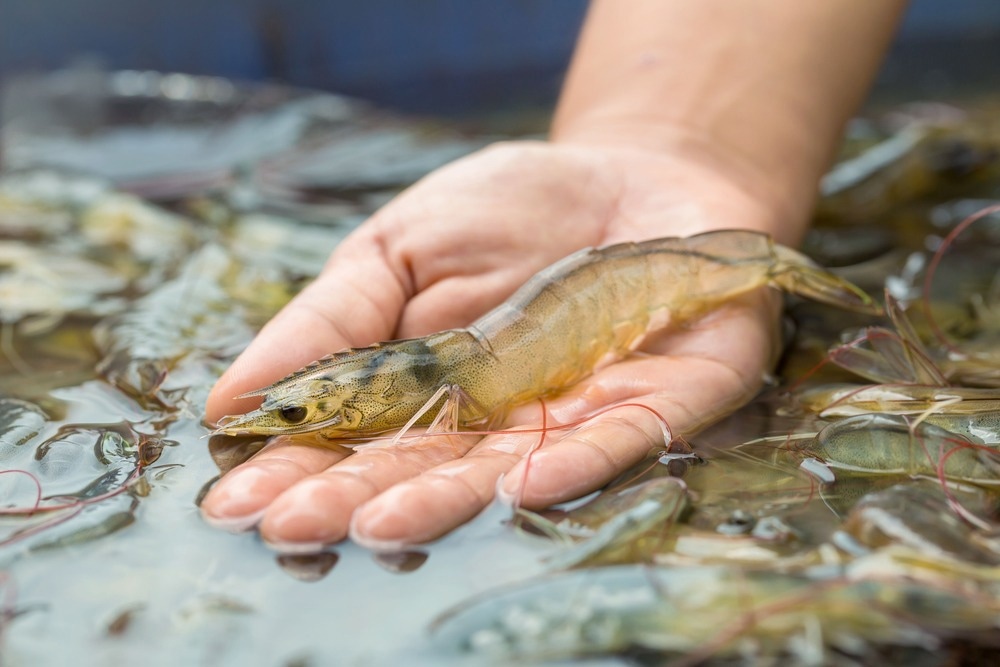The demands for food from a growing human population require food production to shift towards alternative sources of nutrition. Aquaculture is already the fastest-growing food production sector and has become a promising candidate to stabilize food security, yet aquaculture faces many challenges.

Image Credit: GaudiLab/Shutterstock.com
The rise of aquaculture to support global food security
Aquaculture is defined by the Food and Agriculture Organization (FAO) as the farming of aquatic organisms. This includes fishes, crustaceans, mollusks, aquatic plants, and other aquatic photosynthetic organisms and implies some level of ownership of the stock that is being cultivated within a secure and enclosed system. Although this suggests a level of control over what is being farmed, farming methods encompass a range of techniques across many environments, including fresh, brackish, and marine water.
Around the world, an estimated 600 species are being cultivated in aquaculture; this produces over 114 million tons (per 2018), making aquaculture the most developed sector of the food industry in recent decades, surpassing fishing in 2016. However, recent reports from the FAO show that over 40% of fish stocks are fully exploited, meaning they are reaching their maximum limit with no expansion possible. Further, about 16% of these stocks are overfished, and another 6% are already depleted, which has led to a complete loss of production.
Many new areas are being exploited in response, including the Western and Eastern Indian Ocean, the Western Central Pacific, and the Northwest Pacific. However, the state of exploitation of these areas remains largely uncertain, and subsequent production estimates and stock assessments are consequently less reliable.
Defining sustainability in a world that needs more food and resources
As a result, the sustainability of many aquacultural practices has been called into question. This is not a recent issue, as the fact many areas are approaching their limit of maximum fishery production has been an issue for nearly a century. Even by 1945, records show that the UN Technical Committee for Fisheries raised concerns over stock recovery in European waters during the Second World War and stressed the essential need for fisheries conservation after the war.
In a 2020 study by Bridson et al., the authors attempted to bridge the gap in knowledge concerning how sustainability may be defined in aquacultural production. Researchers argued that integrating quantitatively defined sustainable aquaculture using novel model parameters (Limit Reference Point, Target) may be a key breakthrough. Authors defined a 0–100 scale based on farm- and resource-level indicators as well as their modes of activity to compute performance frameworks, which could then assess how sustainable different activities were.
Findings highlighted the reliability of these novel parameters and advocated for the further use of Environmental Indicator Sets (EISs) as tools to express and improve the sustainability of complex ecological systems. However, these models rely on the information of systems that may not be available or accurate enough to result in reliable models. Therefore, further efforts are required to consolidate data availability to improve model accuracy, particularly in regions with low information accessibility.

Image Credit: Phensri Ngamsommitr/Shutterstock.com
Regulating over-exploitation in emerging regions
The rapid economic development of nations has led to increased demand for food, energy, and resources. Aquaculture has supported this development, particularly in Southeast Asia, where aquacultural production is the highest in the world and remains the fastest-developing aquacultural region. Additionally, technological advances have allowed aquacultural production to expand in capacity, provide tools to harvest new species, and exploit previously inaccessible areas.
As a result, many nations are now characterized by a strong fishing and aquacultural presence in coastal and oceanic areas. Countries such as China have fishing fleets in every ocean and sea, have invested in coastal and inland aquacultural facilities, and have extensive budgets to further expand their operations to cater to a growing demand.
A 2020 study by Wang et al. further explored the Chinese aquacultural model and considered the value of aquaculture in the nation's political sphere. The authors found China has established an extensive and comprehensive aquaculture system under the direct leadership of the Ministry of Agriculture and Rural Affairs. The aquacultural sector isn't only a center of production but encompasses research institutions, universities, social organizations, and aquatic enterprises.
Moreover, the country is extending the aquacultural program through technical extension programs, demonstration zones, and technical consultation. However, the study found many emerging problems, such as insufficient funding, outmoded staff structures, and inefficient management systems, which undermines the current and future prosperity of the aquaculture industry.
On a larger spatial scale, other issues are also arising in response to such rapid expansion of aquaculture. In particular, the emission of greenhouse gases and contaminants into the environment, the depletion of current stocks, and the inequity of resources are major challenges to the future of aquaculture.
In response, many policies have elaborated on the reduction of freshwater usage and land resources per unit of production and have focused on improving feed management practices as well as increasing knowledge of farming practices. Looking forward, policies around the world are looking to expand the culture of marine species on and offshore to contribute to the increasing global demand for protein and food security needs. However, changes on a structural level are also necessary to address challenges of production sustainability, equity of resource attainment, and pollution limitation.
Sources:
- Boyd, C. E., D’Abramo, L. R., Glencross, B. D., et al. (2020). Achieving sustainable aquaculture: Historical and current perspectives and future needs and challenges. Journal of the World Aquaculture Society, 51(3), 578–633. https://doi.org/10.1111/jwas.12714
- Bridson, P. B., Stoner, J. M., Fransen, M. H., & Ireland, J. (2020). The aquaculture sustainability continuum – Defining an environmental performance framework. Environmental and Sustainability Indicators, 8, 100050. https://doi.org/10.1016/j.indic.2020.100050
- Martos-Sitcha, J. A., Mancera, J. M., Prunet, P., & Magnoni, L. J. (2020). Editorial: Welfare and Stressors in Fish: Challenges Facing Aquaculture. Frontiers in Physiology, 11. https://doi.org/10.3389/fphys.2020.00162
- Pérez-Sánchez, T., Mora-Sánchez, B., & Balcázar, J. L. (2018). Biological Approaches for Disease Control in Aquaculture: Advantages, Limitations and Challenges. Trends in Microbiology, 26(11), 896–903. https://doi.org/10.1016/j.tim.2018.05.002
- Wang, P., Ji, J., & Zhang, Y. (2020). Aquaculture extension system in China: Development, challenges, and prospects. Aquaculture Reports, 17, 100339. https://doi.org/10.1016/j.aqrep.2020.100339
Further Reading
Last Updated: Nov 25, 2022